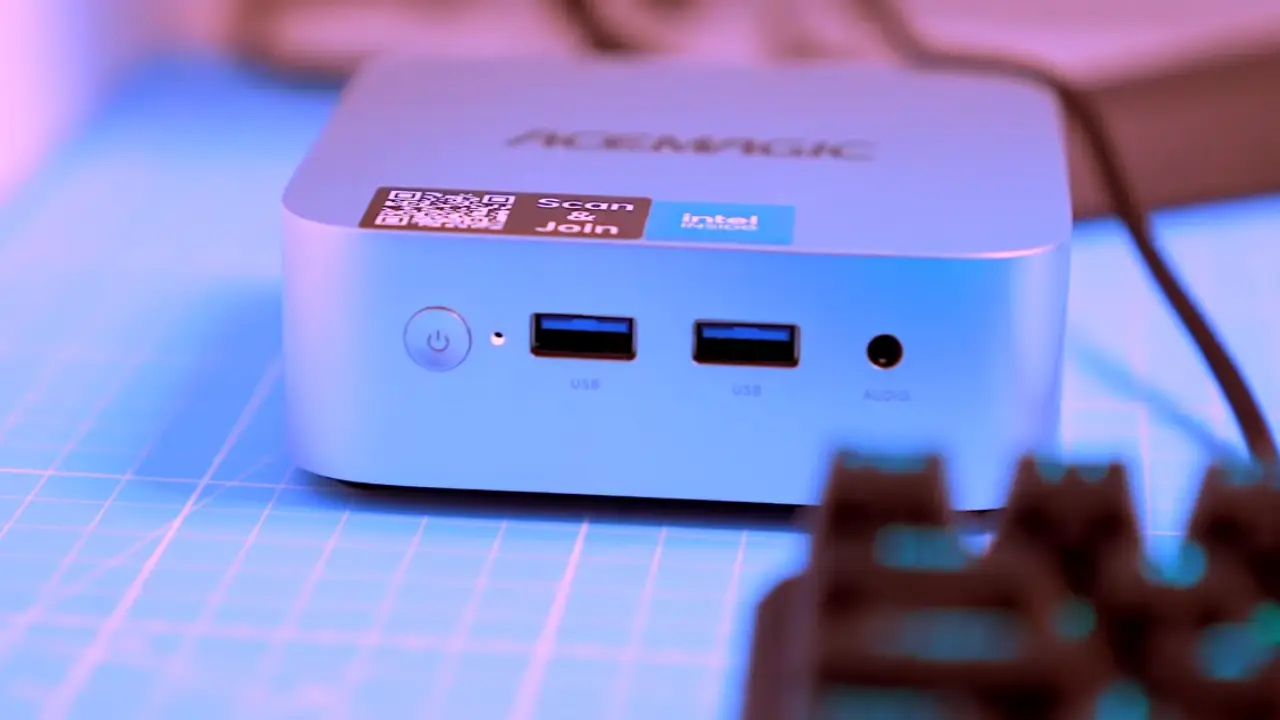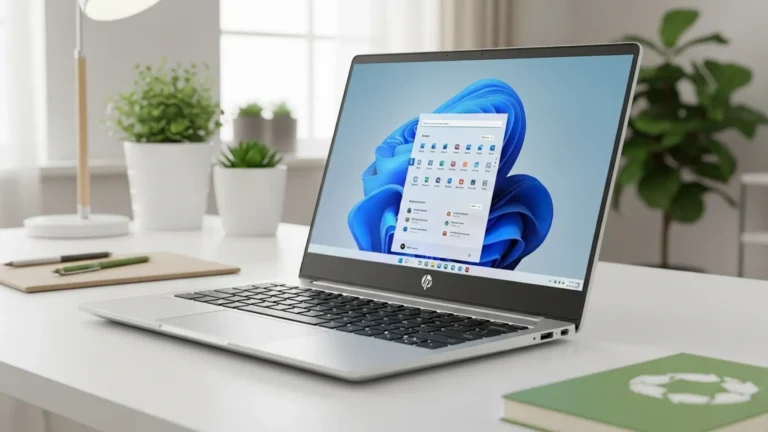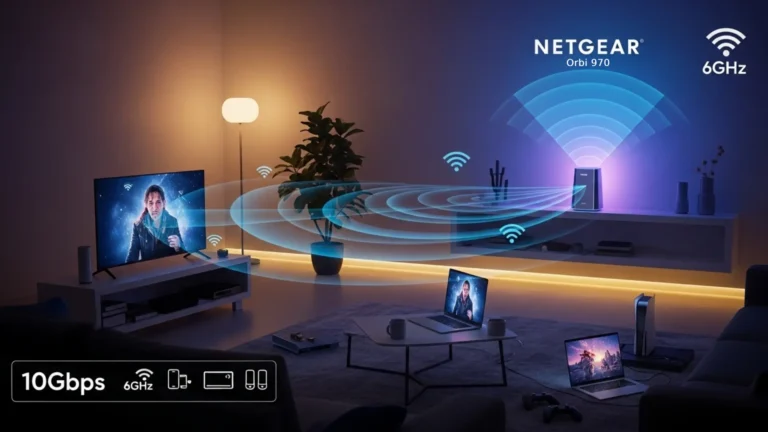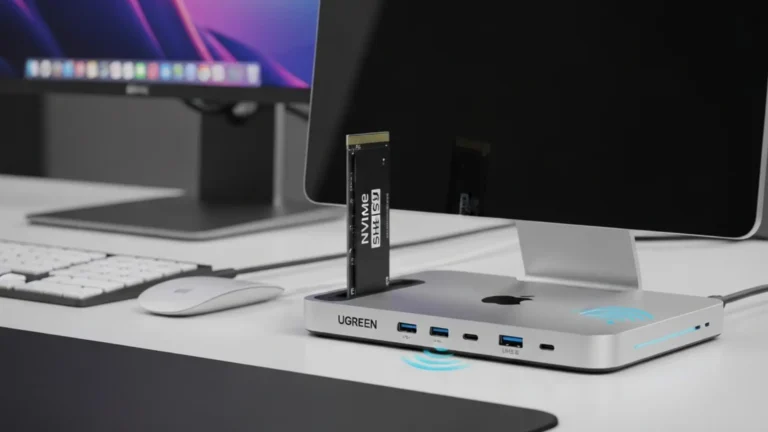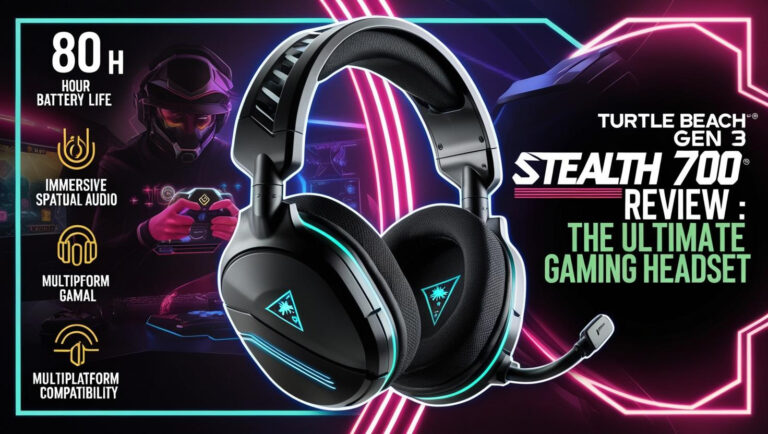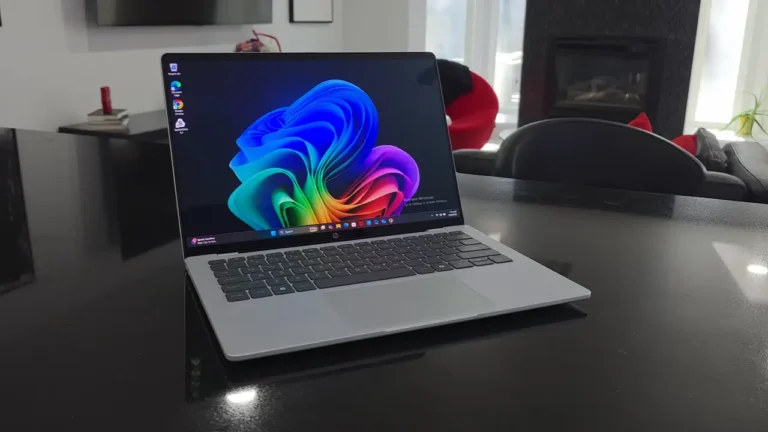ACEMAGIC Vista Mini V1 Review: A Deep Dive into Compact Computing Excellence

If you’ve been searching for a compact, energy-efficient desktop that doesn’t break the bank, the ACEMAGIC Vista Mini V1 might be exactly what you need. Powered by Intel’s latest Twin Lake N150 processor, this palm-sized PC offers a serious upgrade over the popular N100 and N95 chips—making it ideal for daily computing, media streaming, remote work, and more.
With 16GB DDR4 RAM, a fast 512GB SSD, dual-display support, and built-in Wi-Fi and Bluetooth, it brings full desktop performance in a space-saving design. Whether you’re building a quiet workstation, setting up a home office, or just want a reliable second PC, the Vista Mini V1 delivers performance and versatility without the bulk.
But how well does it actually perform under real-world use? In this review, we’ll explore its strengths, limitations, and whether this mini PC lives up to its reputation as one of the best mini pc under $200 in 2025.
TL;DR – ACEMAGIC Vista Mini V1 Review
The ACEMAGIC Vista Mini V1 is a compact and budget-friendly mini PC powered by the latest Intel N150 processor, offering better performance than the N100/N95. It features 16GB RAM, a 512GB SSD, 4K dual display support, and a sleek metal body—making it perfect for home, office, or remote work setups. At under $160, it delivers excellent value for light productivity, media streaming, and multitasking with minimal noise and strong connectivity.
- ✅ Great for everyday use, students, and second-PC setups
- ✅ Tiny footprint with solid performance
- ❌ Not designed for heavy gaming or demanding 3D workloads
Verdict: A powerful and affordable mini desktop that outperforms its price tag.
Overview
What Makes the ACEMAGIC Vista Mini V1 Stand Out?
The ACEMAGIC Vista Mini V1 is a compact desktop computer designed for users who need a space-saving solution without sacrificing functionality. Powered by either the Intel N150 or N97 processor, it’s built for everyday tasks like web browsing, office work, and 4K media streaming. With its sleek design, energy-efficient performance, and versatile connectivity, it’s ideal for students, professionals, and casual users looking for a budget-friendly mini PC.
Key Specifications
- Processor: Intel Twin Lake N150 or Alder Lake N97 (up to 3.6 GHz)
- RAM: 16GB DDR4 (non-upgradable)
- Storage: 512GB M.2 SSD (expandable up to 2TB)
- Graphics: Intel UHD Graphics (24 execution units)
- Connectivity: 2x USB 3.2 Gen2, 2x USB 2.0, HDMI 2.0, DisplayPort 1.4, Gigabit Ethernet, Wi-Fi, Bluetooth
- Operating System: Windows 11 Pro (pre-installed, bloatware-free)
- Dimensions: 3.9 x 3.9 x 1.3 inches
- Weight: 245g
- Power Consumption: 15W (TDP)
- Warranty: 2-year warranty, 24/7 technical support
This ultra-portable PC is designed to fit into tight spaces, mount behind monitors with its included VESA bracket, or even travel with you for work or entertainment on the go.
Also read Best Mini Gaming PCs of 2025
Design and Build Quality

The Vista Mini V1’s ultra-compact design is a standout feature. At 100 x 100 x 32mm, it’s smaller than competitors like the Beelink S13 and GMKtec NucBox G1, making it one of the tiniest Windows PCs on the market. The silver plastic chassis with a metallic finish feels surprisingly premium for its price point, and the build is solid despite being entirely plastic. The included VESA mount allows you to attach it behind a monitor or under a desk, keeping your workspace clutter-free.
The cooling system is another highlight. A quiet fan with dual air outlets keeps temperatures in check, remaining nearly silent during light tasks and producing minimal noise under load. However, the fan draws air from the bottom, so placing the device on a flat, well-ventilated surface is crucial to prevent overheating. Accessing the internals for upgrades is a bit cumbersome—four screws are hidden under rubber feet and require a long, thin screwdriver—but once opened, the M.2 SSD and RAM slot are easily accessible.
Tip: For optimal cooling, avoid placing the Vista Mini V1 on soft surfaces like carpets. Use the VESA mount or a stand to ensure proper airflow. Regular cleaning of the fan intake is recommended to maintain performance.
Performance

The Intel Twin Lake N150 processor is the heart of the Vista Mini V1, offering a 39% performance improvement over the N100, with single-core scores around 1048 and multi-core scores near 2870 in Cinebench R23. The integrated Intel UHD Graphics (24 EUs) supports 4K UHD playback and light gaming, delivering smooth performance for:
- Office tasks: Microsoft Office, Google Suite, and Zoom run without hiccups.
- Web browsing: Handles multiple browser tabs and 4K streaming on platforms like Netflix and YouTube.
- Retro gaming: Supports emulation of 8th-gen consoles (e.g., Wii-U at 60 FPS) and lightweight PC games at 720p.
The 16GB DDR4 RAM ensures smooth multitasking, while the 512GB SATA SSD provides decent read/write speeds (509MB/s read, 465MB/s write). However, the SATA SSD is slower than NVMe drives found in some competitors, and the single-channel RAM limits performance in memory-heavy applications like video editing or 3D rendering.
In my testing, the Vista Mini V1 handled dual 4K display setups flawlessly, making it a great choice for home theater PCs or multi-monitor workstations. It also performed well as a Batocera box for retro gaming, though heavy modern games or demanding tasks like 4K video editing push it beyond its limits.
Expert Insight: The N150’s performance is impressive for its 15W TDP, but users needing more power should consider mini PCs with AMD Ryzen 5 5500U or Intel Core i5 processors for $50–$100 more. For Linux users, the Vista Mini V1 runs Ubuntu 21.10 smoothly, with Wi-Fi and Bluetooth working out of the box.
Connectivity

The Vista Mini V1 offers robust connectivity for its size:
- 2x USB 3.2 Type-A (Gen 2, 10Gbps) for fast peripherals
- 2x USB 2.0 Type-A for low-bandwidth devices like mice or printers
- HDMI 2.0 and DisplayPort 1.4 for dual 4K@60Hz displays
- Gigabit Ethernet, Wi-Fi 6, and Bluetooth 5.2 for reliable networking
- 3.5mm audio jack for headphones or speakers
The absence of a USB-C port is a significant drawback, requiring adapters for modern peripherals like USB-C docks or external drives. This is a notable oversight in 2025, as competitors like the Beelink S13 include USB-C. Still, the dual-band Wi-Fi 6 and Gigabit Ethernet ensure fast, stable connections, and the dual display support makes it ideal for multitasking or media setups.
Recommendation: If you rely on USB-C devices, invest in a USB-C to USB-A adapter or hub. For network-heavy tasks, use the Ethernet port for maximum stability.
Upgrade Options
The Vista Mini V1 supports upgrades, but its design imposes constraints:
- RAM: Single SO-DIMM slot, upgradable to 32GB DDR4 (3200MHz). The N150 chipset doesn’t support dual-channel RAM, limiting bandwidth.
- Storage: Single M.2 2280 slot, compatible with SATA and NVMe PCIe 3.0 SSDs, upgradable to 2TB. No secondary storage slot is available.
Upgrading requires opening the chassis, which is challenging due to the deeply recessed screws. Once inside, swapping the RAM or SSD is straightforward, but the lack of a second storage slot or RAM channel limits scalability compared to models like the Beelink S13, which supports dual SSDs.
Advice: If you plan to upgrade, opt for a 32GB RAM module and an NVMe SSD for better performance. Check compatibility with your specific SSD model, as some NVMe drives may not be fully supported.
Pros & Cons
Comparison
ACEMAGIC Vista Mini V1 vs. Beelink S13
Our Pick ACEMAGIC Vista Mini V1 |  Beelink S13 | |
|---|---|---|
| CPU | Intel Twin Lake N150 (4 cores, up to 3.6GHz) | Intel Twin Lake N150 (4 cores, up to 3.6GHz) |
| GPU | Intel UHD Graphics (24 EUs, ~1GHz) | Intel UHD Graphics (24 EUs, ~1GHz) |
| RAM | 16GB DDR4 (single slot, 3400MHz, non-upgradable) | 16GB DDR4 (SODIMM, upgradable to 32GB) |
| Storage | 512GB M.2 SATA SSD (upgradable to 2TB, single slot) | 512GB M.2 SATA SSD (upgradable to 2TB, dual slots) |
| Ports | 2x USB 3.2 Gen2, 2x USB 2.0, HDMI 2.0, DisplayPort 1.4, Gigabit Ethernet, 3.5mm audio | 2x USB 3.2 Gen1, 2x USB 2.0, 2x HDMI 2.0, Gigabit Ethernet, 3.5mm audio |
| Connectivity | Wi-Fi 6, Bluetooth 5.0 | Wi-Fi 6, Bluetooth 5.2 |
| Dimensions | 3.9 x 3.9 x 1.3 in (100 x 100 x 32mm) | 4.5 x 4.3 x 1.6 in (115 x 110 x 40mm) |
| Weight | 0.54 lbs (245g) | 0.61 lbs (275g) |
| Power Consumption | 15W (30W adapter) | 15W (30W adapter) |
| Cooling | Active (quiet axial fan) | Active (quiet fan) |
| OS | Windows 11 Pro (clean, no bloatware) | Windows 11 Pro (clean, no bloatware) |
| Storage Speed (CrystalDiskMark) | 509MB/s read, 465MB/s write (SATA) | ~500MB/s read, ~460MB/s write (SATA) |
| Benchmark (Cinebench R23) | ~1048 single-core, ~2870 multi-core (N150) | ~1048 single-core, ~2870 multi-core (N150) |
| Display Support | Dual 4K@60Hz (HDMI + DisplayPort) | Dual 4K@60Hz (2x HDMI) |
| Upgrade Options | Limited (single M.2 slot, non-upgradable RAM) | Better (dual M.2 slots, upgradable RAM) |
| Build Quality | Plastic, silver finish, feels sturdy | Plastic with diamond pattern, solid with VESA mount |
| Noise Level | Nearly silent at idle, low noise under load | Nearly silent at idle, low noise under load |
Who Should Buy the ACEMAGIC Vista Mini V1?
Ideal for:
- Remote workers: Handles video calls, spreadsheets, and multitasking.
- Students: Compact for dorms, great for studying and streaming.
- HTPC users: Perfect for 4K media playback in living rooms.
- Casual gamers: Retro emulation and light PC games.
Not for: Power users needing high-end gaming or heavy creative workloads.
It shines in home office, small desk setups, or as an HTPC, but falls short for intensive tasks like 4K video editing.
People also ask
Is the ACEMAGIC Vista Mini V1 good for daily use?
Yes, it excels at daily tasks like web browsing, office work, and media streaming. The Intel N150 and 16GB RAM ensure smooth performance for multitasking, while the compact design saves space.
Can this Mini PC handle 4K video playback?
Absolutely. The Intel UHD Graphics supports 4K@60Hz playback via HDMI 2.0 and DisplayPort 1.4, delivering crisp visuals for streaming or dual-monitor setups.
What’s the difference between Intel N150 and N100?
The N150 offers a 39% performance boost over the N100, with a higher 3.6GHz turbo clock and improved cache (6MB vs. 4MB). It’s faster for multitasking and light graphics tasks but shares the same 6W TDP.
How much storage can I add to the Vista Mini V1?
The M.2 2280 slot supports upgrades to 2TB (SATA or NVMe PCIe 3.0), providing ample space for files, apps, or media libraries.
Does it support Wi-Fi and Bluetooth out of the box?
Yes, it includes Wi-Fi 6 for fast internet and Bluetooth 5.2 for seamless peripheral connectivity, like wireless keyboards or speakers.
Verdict
A Budget Mini PC with Minor Trade-Offs
The ACEMAGIC Vista Mini V1 Mini PC is a stellar choice for users seeking a compact, affordable, and energy-efficient computing solution. Its Intel N150 processor, 16GB RAM, and dual 4K display support deliver robust performance for productivity, media, and light gaming, all within a sub-$200 price point. The lack of USB-C and limited upgrade options (single RAM/SSD slot, no NVMe) are drawbacks, but they’re acceptable given its cost and target audience.
For professionals, students, or home users needing a reliable mini PC for home and office, the Vista Mini V1 offers exceptional value. Those requiring more power or scalability may prefer alternatives like the Beelink S13 or GMKtec NucBox G1, but for budget-conscious buyers, this device is hard to beat. Check for deals on Amazon, where prices often drop to $135 with coupons, or visit acemagic.com for more details.

